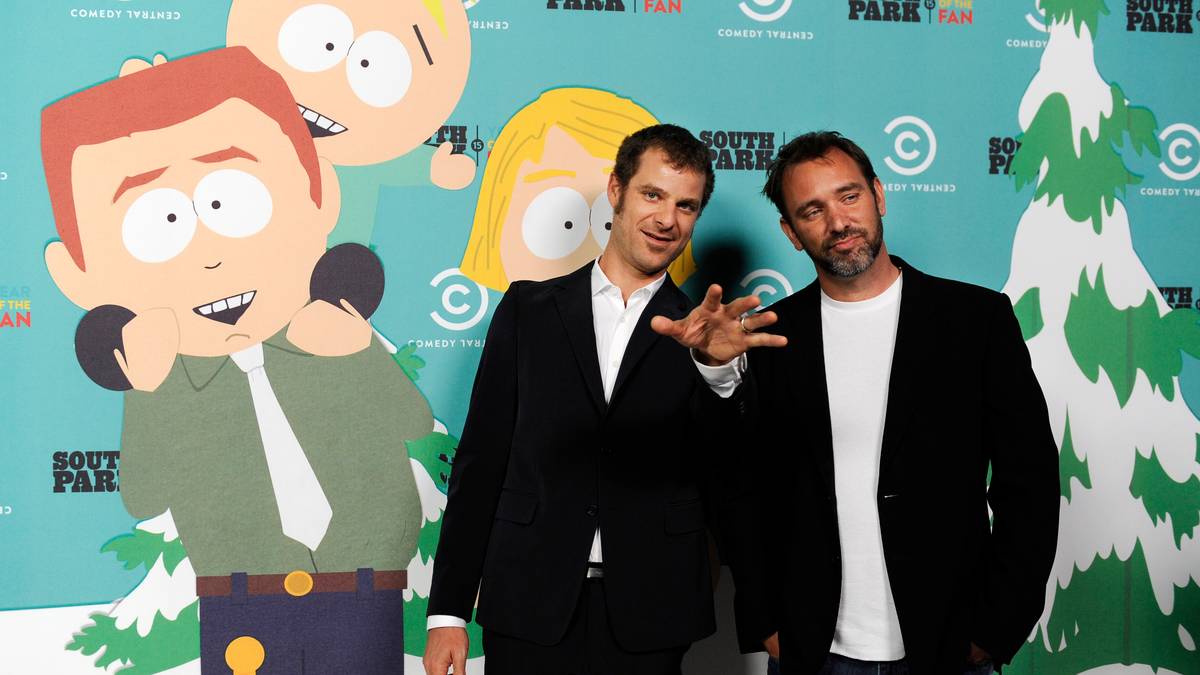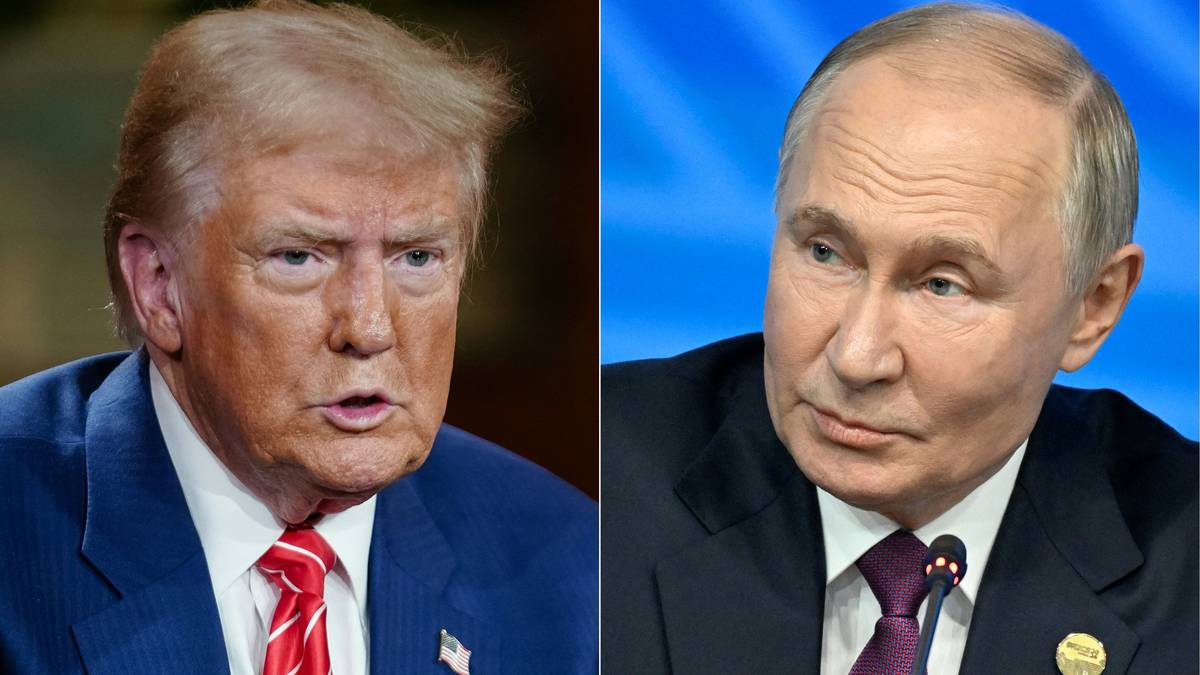Han kommer nok til å legge seg borti mer enn det, skal bli interessant å se hva som skjer når han vasser ut i bedet til IOC.Det kan du si. Det viktigste premisset her er nok å sikre at kun kvinner konkurrer i kvinneklassen og akkurat det er jo noe de aller fleste er helt enig i.
Politikk, religion og samfunn President Donald J. Trump - Quo vadis? (Del 2)
- Trådstarter Høvdingen
- Startdato
Diskusjonstråd Se tråd i gallerivisning
-
- Ble medlem
- 04.04.2011
- Innlegg
- 2.039
- Antall liker
- 1.003
Spania dropper kjøp av amerikanske F-35-fly
Det opplyser en talsperson for det spanske forsvarsdepartementet.
I stedet står valget mellom de europeiske alternativene Eurofighter og Future Combat Air System (FCAS).
Europeiske selskaper står bak begge flytypene, som Spania nå skal velge mellom.
Regjeringen til statsminister Pedro Sánchez varslet tidligere i år at forsvarsbevilgningene skal økes, i tråd med Natos 2-prosentmål. Men regjeringen ønsker å bruke mesteparten av de ekstra forsvarsmidlene i Europa.
Derfor droppes planene om å kjøpe amerikanske F-35, skriver El Pais.
(NTB)
Han har nok hørt om den sinnsyke korrupsjonen i IOC og forventer å få ta del i den.Han kommer nok til å legge seg borti mer enn det, skal bli interessant å se hva som skjer når han vasser ut i bedet til IOC.
Han oppnevner nok seg selv som overkontrollør skal du se. Men kun i kvinnegarderoben vel å merke.Det kan du si. Det viktigste premisset her er nok å sikre at kun kvinner konkurrer i kvinneklassen og akkurat det er jo noe de aller fleste er helt enig i.
Ja tenkte det samme. Basert på en gjennomsnittelig Trump mnd. så tipper jeg han kommer med et eller annet om at utøverne må signere en erklæring el.l. på at de ikke kan si noe negativt om han eller US før de får visum.Berlin 1936......
Hvis man er en utøver som har LA `28 som mål så bør man være forsiktig med hva man skriver på sosiale medier de neste årene....Dette må da være den mest åpenbare boikotten på årtier.
Så vi mangler bare en transutøver som kan bli vår tids Jesse Owens, og løpe inn til gull rett foran nesa på idioten. Nuvel, litt mye å håpe på antagelig.Berlin 1936......Innlegg fra Hans Petter Midttun på linkedin:
NATO: An Alliance or something else altogether?
An alliance is a formal agreement between two or more nations to cooperate for mutual benefit, particularly regarding security, defence, or other strategic interests. Formal Agreement, Mutual Cooperation, Shared Benefits and Burdens, Common Threats or Interests, and Collective Action characterise it.
If this is correct, it is prudent to ask: Is NATO still an Alliance?
NATO has undoubtedly been a military alliance in the past (e.g. during the Cold War). That does, however, not mean that it remains an effective alliance today.
Formal Agreement?
NATO was founded on the Washington Treaty. Recent developments, however, have made Europe question the US commitment to Article 5 (Collective Defence).
Mutual Cooperation?
The US and Europe/Canada strategy towards Ukraine and Russia could not be more different. The US seeks to reset relations with Russia and encourage increased trade. It is pursuing a “peace plan” that aligns with the Kremlin’s plan to defeat Ukraine, rewarding the aggressor and pressuring the victim.
Seeing a risk of an open confrontation with Russia in 2027-2030, Europe and Canada seek a just and lasting peace in Ukraine. They pursue a Russian defeat in Ukraine.
More importantly, like Russia, the US vocally threatens European security and stability. The present-day US is threatening Europe and Canada with land-grabs and annexation.
Shared Benefits and Burdens?
While the US offers unique capabilities, European taxpayers have always carried the main part of the costs. Since Trump took office, the US has stopped authorising new aid altogether. On the contrary, it only offers Europe to buy US weapons to donate them to Ukraine.
On top of its transactional approach – making sure the US has no costs and only earnings from the war – it has also imposed tariffs on its allies to further weaken their economy. In the absence of US burden sharing, many European countries are unsure how they will continue to finance Ukraine’s persistent needs.
Common Threats or Interests?
The 2024 NATO Summit covered everything from China's rise to Africa's instability, from cyber threats to Ukraine's path toward membership. The declaration addressed strategic competition, Iran's destabilising actions, the deepening partnership between China, Russia, Iran and North Korea, and their mutual attempts to undercut the rules-based international order. In contrast, the 2025 summit resulted in a one-pager. America and Europe no longer agree on what threatens them, who their enemies are, or what NATO should do about it.
Collective Action?
NATO’s support of Ukraine is anything but unified. The US has turned its back on European security, seeing China as the greater threat. Where Europe pursue a Russian defeat in Ukraine, the US aim for cooperation and trade.
NATO might still be an Alliance on paper, but it is no longer effective. On the contrary, it obstructs European strategic autonomy.Det hvite hus har lagt ut den amerikanske grunnloven på nettet. Av en eller annen grunn har de fjernet del 9 og 10 av artikkel 1. Del 9 omhandler kravet om at man må ha skjellig grunn til mistanke ved arrestasjon, og den arresterte skal få advokathjelp (og at arrestasjonen må godkjennes av en dommer basert på at myndighetene kan dokumentere at arrestasjonen er lovlig). Del 10 sier at det er kongressen som innfører importavgift (tariffs) og ikke noe presidenten kan gjøre på egen hånd.
Lurer på hvorfor akkurat de delene er blitt borte...Uff, det var et vanskelig spørsmål....
Eg trur poenget med del ti er å begrensa retten til delstatane i å handla sjølvstendig i slike spørsmål. Jf del åtte:Del 10 sier at det er kongressen som innfører importavgift (tariffs) og ikke noe presidenten kan gjøre på egen hånd.
… all Duties, Imposts and Excises shall be uniform throughout the United States …Han truer nå EU med 35% straffetoll fordi avtalen visstnok ikke var akkurat slik han trodde.
På mandag sa han: EU vil investere 600 milliarder $ i USA
På tirsdag sa han: Firma i EU vil investere 600 milliarder $ i USA
På onsdag sa han: EU har gitt meg 600 milliarder $ som jeg kan investere i det jeg vil i USA
Hva han vil si i dag må da gudene vite.
Det går ikke an å forhandle med noe sånt- Ble medlem
- 04.04.2011
- Innlegg
- 2.039
- Antall liker
- 1.003

"South Park" fortsetter å herje med Trump i episode to
Den første episoden av «South Parks» 27. sesong satte rekord for serien, med over seks millioner seere. Episoden viste blant annet en naken Donald Trump med mikropenis – i seng med djevelen selv. I episode to fortsetter sjikanen, og denne gangen latterliggjøres også USAs visepresident JD Vance... www.nrk.no
Donalds urix
www.nrk.no
Donalds urix
Og litt mer bølling mot India og Brasil så går det vel mot mer kraftfull BRICS
The US drive to find third countries to deport migrants is gaining momentum
Rwanda is the latest nation to accept citizens of other nationalities amid allegations of repression and torture at Trump’s chosen destinationsenglish.elpais.com

Lula da Silva on Trump’s tariffs against Brazil: ‘My intuition says he doesn’t want to talk. And I won’t humiliate myself’
The Brazilian president also believes Jair Bolsonaro should be tried for inciting the US to use trade as a weapon over the latter’s trial for plotting to overturn the 2022 electionenglish.elpais.com
- Ble medlem
- 04.04.2011
- Innlegg
- 2.039
- Antall liker
- 1.003
Gubben kan jo leike med EU som han sjølv vil. Helt tragisk hvor svake dem er. En bølle må man stå opp i mot, ikke være som Ursula som er gulv-filla til Trump.Han truer nå EU med 35% straffetoll fordi avtalen visstnok ikke var akkurat slik han trodde.
På mandag sa han: EU vil investere 600 milliarder $ i USA
På tirsdag sa han: Firma i EU vil investere 600 milliarder $ i USA
På onsdag sa han: EU har gitt meg 600 milliarder $ som jeg kan investere i det jeg vil i USA
Hva han vil si i dag må da gudene vite.
Det går ikke an å forhandle med noe sånt
Sånn btwInnlegg fra Hans Petter Midttun på linkedin:
NATO: An Alliance or something else altogether?
An alliance is a formal agreement between two or more nations to cooperate for mutual benefit, particularly regarding security, defence, or other strategic interests. Formal Agreement, Mutual Cooperation, Shared Benefits and Burdens, Common Threats or Interests, and Collective Action characterise it.
If this is correct, it is prudent to ask: Is NATO still an Alliance?
NATO has undoubtedly been a military alliance in the past (e.g. during the Cold War). That does, however, not mean that it remains an effective alliance today.
Formal Agreement?
NATO was founded on the Washington Treaty. Recent developments, however, have made Europe question the US commitment to Article 5 (Collective Defence).
Mutual Cooperation?
The US and Europe/Canada strategy towards Ukraine and Russia could not be more different. The US seeks to reset relations with Russia and encourage increased trade. It is pursuing a “peace plan” that aligns with the Kremlin’s plan to defeat Ukraine, rewarding the aggressor and pressuring the victim.
Seeing a risk of an open confrontation with Russia in 2027-2030, Europe and Canada seek a just and lasting peace in Ukraine. They pursue a Russian defeat in Ukraine.
More importantly, like Russia, the US vocally threatens European security and stability. The present-day US is threatening Europe and Canada with land-grabs and annexation.
Shared Benefits and Burdens?
While the US offers unique capabilities, European taxpayers have always carried the main part of the costs. Since Trump took office, the US has stopped authorising new aid altogether. On the contrary, it only offers Europe to buy US weapons to donate them to Ukraine.
On top of its transactional approach – making sure the US has no costs and only earnings from the war – it has also imposed tariffs on its allies to further weaken their economy. In the absence of US burden sharing, many European countries are unsure how they will continue to finance Ukraine’s persistent needs.
Common Threats or Interests?
The 2024 NATO Summit covered everything from China's rise to Africa's instability, from cyber threats to Ukraine's path toward membership. The declaration addressed strategic competition, Iran's destabilising actions, the deepening partnership between China, Russia, Iran and North Korea, and their mutual attempts to undercut the rules-based international order. In contrast, the 2025 summit resulted in a one-pager. America and Europe no longer agree on what threatens them, who their enemies are, or what NATO should do about it.
Collective Action?
NATO’s support of Ukraine is anything but unified. The US has turned its back on European security, seeing China as the greater threat. Where Europe pursue a Russian defeat in Ukraine, the US aim for cooperation and trade.
NATO might still be an Alliance on paper, but it is no longer effective. On the contrary, it obstructs European strategic autonomy.
hvor mange check ble det på lista
DN: Trump-tollen: Norge har langt dårligere vilkår enn EU
Nye opplysninger til DN viser at Norge har blant Europas dårligste tollvilkår med USA. Bare Serbia, Bosnia-Hercegovina, Moldova og Sveits kom verre ut av det. Nærings- og fiskeridepartementet bekrefter til DN at Norge får 15 prosent pluss ordinære tollsatser. Det betyr at noen varegrupper vil få... www.nrk.no
Kanada synes å ha bestemt seg når det gjelder status som USAs 51. delstat. Vinsalget stupte og spritsalget har falt med 66%. To kanadiske provinser tillater salg av amerikansk vin og sprit, mens de øvrige har forbudt det. Salget går dårlig og amerikanske produsenter går konk.
www.nrk.no
Kanada synes å ha bestemt seg når det gjelder status som USAs 51. delstat. Vinsalget stupte og spritsalget har falt med 66%. To kanadiske provinser tillater salg av amerikansk vin og sprit, mens de øvrige har forbudt det. Salget går dårlig og amerikanske produsenter går konk.
Noen må ta mot til seg, sette seg ned med tullingen og forklare hvem som betaler tariffene:


Dette ble diskutert over alt i går og etterhvert så syntes jeg nesten litt synd på Myrseth, det er ikke lett når «alle» roper høyt om at vi har fått en dårligere avtale enn EU og prøve å forklare at vi ikke har noe avtale enda slik EU har, de diskuterer fortsatt prøvde hun å få frem men det var fånyttes...Sånn btw
hvor mange check ble det på lista
DN: Trump-tollen: Norge har langt dårligere vilkår enn EU
Nye opplysninger til DN viser at Norge har blant Europas dårligste tollvilkår med USA. Bare Serbia, Bosnia-Hercegovina, Moldova og Sveits kom verre ut av det. Nærings- og fiskeridepartementet bekrefter til DN at Norge får 15 prosent pluss ordinære tollsatser. Det betyr at noen varegrupper vil få... www.nrk.no
Kanada synes å ha bestemt seg når det gjelder status som USAs 51. delstat.
www.nrk.no
Kanada synes å ha bestemt seg når det gjelder status som USAs 51. delstat.
Og antallet kanadiere som har besøkt grensestatene for shopping og morro, samt for ferier i Florida og andre steder er ned 30-60% avhengig av hvor det er snakk om. Så har man i tillegg overseas visitors som ikke akkurat er per oppadgående. Det hjelper muligens ikke veldig at blant annet Australia, Japan, Storbritannia og Tyskland har redigert sine travel advisories kraftig når det gjelder USA.Turisme er vel en av USA viktigste bransjer? Den er vel p.t. ned ca 30-40%.
Håper jo også at folk ser på sine amerikanske forbruksvaner. Vi har i det minste ryddet på badet og funnet europeiske erstatninger for det meste vi har av Proctor & Ganble og lignende produkter, og kikker ekstra nøye på en del forpakninger i dagligvarehandelen fo å sile vekk amerikanske leverandører er det er mulig. Amerikansk vin er helt ute av frågan for vår del, har aldri vært noen storkonsument, men dog. Synd for liberale californiere, men dere er kollektivt i søpla.
2,5 % av BNP..Turisme er vel en av USA viktigste bransjer? Den er vel p.t. ned ca 30-40%.Fredsfyrsten...
– Det som har skjedd siden Trump tok over som president er at Putin har mer enn doblet rakett- og droneangrepene mot den ukrainske sivilbefolkningen.

Trumps Russland-ultimatum utløper i dag
Trump har truet med å innføre 100 prosent straffetoll mot Russland for å tvinge Putin til fred. Forskere tror fristen vil ha liten effekt på Russlands krig i Ukraina. www.nrk.no
Jeg kom over ei på instagram som hevdet at tRump sine fysiske og kognitive symptom peker i retning av langt fremskreden syfilis. Den morsomste diagnosen så langt syns jeg, og forklarer også hvorfor fruen er sur på han.
www.nrk.no
Jeg kom over ei på instagram som hevdet at tRump sine fysiske og kognitive symptom peker i retning av langt fremskreden syfilis. Den morsomste diagnosen så langt syns jeg, og forklarer også hvorfor fruen er sur på han.
 Meget interessant og ny lærdom for oss som ikke er høyt utdannet eller jobber i/med faget
Meget interessant og ny lærdom for oss som ikke er høyt utdannet eller jobber i/med faget

It’s Beginning to Smell a Lot Like Stagflation
And it's all about Trumponomicspaulkrugman.substack.com
Dermed forsvinner nærmere 1% av BNP. Jeg ser Jake Broe rapporterer at flyplassen i Las Vegas er nesten tom for folk.2,5 % av BNP..Welcome to Trumponomics. What could possibly go wrong.

The Bleak Future of Trumponomics - The American Prospect
Donald Trump is destroying the world’s faith in America and the dollar. We will pay dearly for that. prospect.org
ualminnelig bra, de har helt frivillig valgt det sjøl
prospect.org
ualminnelig bra, de har helt frivillig valgt det sjøl
det blir ikke bedre en det
og enda bedre, det er antagelig det siste de fikk velge på dette nivået
de valg de får heretter er av det mer dystre slagetKan fort bli slik
Når det er i boks forlater trump åstedet og utbasunerer:Rykter om Ukraina-avtale presser oljeprisen ned
Oljeprisen er ned etter rykter om at USA og Russland planlegger en Ukraina-avtale, ifølge Bloomberg.e24.no
fred i vår tid laget av meg
meg skal ha fredspris
om 4 år starter russerne neste korstog
trump fikk fredsprisen
puten fikk deler og får hele ukraina
norge klager fortsatt på toll og
hevder fremdeles at Norge fikk en bedre avtale en mange andre land
russerne har fortsatt og fortsetter sin styrke og infrastruktur oppbygging i nord
mens Norge har igangsatt et utvalg
sånn går nu daganWashington D.C.: Trump beordrer føderale politistyrker ut i gatene
USAs president Donald Trump har truet med å ta over styringen av Washington DC. Nå øker Det hvite hus tilstedeværelsen av føderale politistyrker.www.aftenposten.no
Formålet er å bekjempe kriminalitet, og tiltaket skal vare minst en uke med mulighet for forlengelse, sier Det hvite hus.
– Washington D.C. er en fantastisk by, men den har vært plaget av voldelig kriminalitet altfor lenge. President Trump har beordret økt tilstedeværelse av føderale politistyrker for å beskytte uskyldige borgere, sa Det hvite hus’ pressetalsperson Karoline Leavitt i en uttalelse.
«Ute av kontroll»
– Det blir ingen trygge steder for voldelige kriminelle i Washington, sa Leavitt.
Trump skriver på sin sosiale medieplattform Truth Social at kriminaliteten i Washington er «ute av kontroll».
– Hvis D.C. ikke skjerper seg raskt, har vi ikke noe annet valg enn å ta føderal kontroll over byen, drive den slik den burde drives, og gi klar beskjed til kriminelle om at de ikke slipper unna lenger, skriver Trump.
USAs president Donald Trump har gjentatte ganger tatt til orde for å innføre føderalt styre i hovedstaden. Foto: Julia Demaree Nikhinson, AP/NTBAntydet å ta over styringen gjentatte ganger
Kunngjøringen kommer etter at Trump ved flere anledninger har antydet at Washington kan bli tilbakeført til føderale myndigheter.
I juli raslet Trump igjen med sablene, da han sa Det hvite hus har makten til «å styre steder når vi må». Trump sa da at hans stabssjef var i nær kontakt med ordføreren i D.C., demokraten Muriel Bowser.
USAs hovedstad står nemlig i en særstilling. Byen tilhører ikke noen delstat, og det fryktes at Trump vil sette lokaldemokratiet til side og innføre føderal kontroll. Det vil si at USAs statsapparat styrer byen.
For å gjøre dette må Home Rule Act fra 1973 oppheves av Kongressen, et tiltak presidenten sier at juristene ser nærmere på, men som trolig vil møte motstand.
Home Rule Act er en lov som gir innbyggerne i Washington D.C. rett til å velge sin egen ordfører og bystyre.
Trump har også uttalt at han ønsker en endringer i lovverket for å straffeforfølge mindreårige som voksne. Utspillet har skapt sterke reaksjoner både i hovedstaden og nasjonalt.
unfurl="true"]https://www.aftenposten.no/verden/i...-beordrer-foederale-politistyrker-ut-i-gatene[/URL]- Ble medlem
- 23.03.2006
- Innlegg
- 21.176
- Antall liker
- 11.968

New York Times: USA får angripe karteller i utlandet
TV 2 Nyheter Livestudio - Siste nytt i dagwww.tv2.no
Skummelt.
Bare vent til uregulert krypto, aka Ponzi, krasjer.Welcome to Trumponomics. What could possibly go wrong.

The Bleak Future of Trumponomics - The American Prospect
Donald Trump is destroying the world’s faith in America and the dollar. We will pay dearly for that. prospect.org
prospect.org
Tungt for det?Ja, måtte det nå snart bli slutt på denne proxy krigen! Sfra mine egen post i trump tråden:
Kan fort bli slik
Rykter om Ukraina-avtale presser oljeprisen ned
Oljeprisen er ned etter rykter om at USA og Russland planlegger en Ukraina-avtale, ifølge Bloomberg.
e24.no
Når det er i boks forlater trump åstedet og utbasunerer:
fred i vår tid laget av meg
meg skal ha fredspris
om 4 år starter russerne neste korstog
trump fikk fredsprisen
puten fikk deler og får hele ukraina
norge klager fortsatt på toll og
hevder fremdeles at Norge fikk en bedre avtale en mange andre land
russerne har fortsatt og fortsetter sin styrke og infrastruktur oppbygging i nord
mens Norge har igangsatt et utvalg
sånn går nu dagan -
Laster inn…
Diskusjonstråd Se tråd i gallerivisning
-
-
Laster inn…












